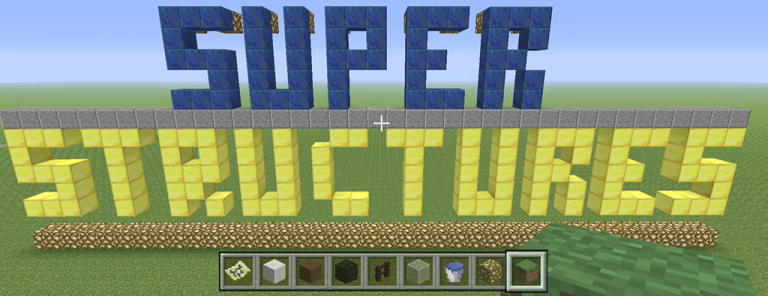Learning with Minecraft
There’s been a lot of coverage in the press about teaching with Minecraft- Microsoft even releasing an Educational version. So when the kids were set a homework project about “Super Structures” this got me thinking- let’s give Minecraft a go to supplement the project work set by the teacher.
The project brief was to produce an informational poster or model on a structure of their choice, in our case The Eiffel Tower and Big Ben (or at least the tower which contains the bell by that name to be pedantic). Suitable amounts of craft paper, lolly sticks, straws, matchsticks and PVA were obtained and they set about construction, but once that was done and the glue was drying they turned to the Xbox One.

I’d prepared for this and we sat down and spent some time building Minecraft impressions of our Super Structures. This led to discussions about the materials to use (or at least the colour and texture), how big to make the model, and the shapes of the buildings. For example we before building tall towers we noted that in this case they both have a square base, the Eiffel Tower is made of iron and looks dark grey/black, we need to make the base wide enough in each that we have space to slope in to a point at the top but not so wide that we spend all day piling blocks up to make them tall enough, and so on.
It also led to discussions about the differences between Minecraft and real life. Gravity and other forces aren’t as much of a factor in the Minecraft world, and Augustus Pugin and Charles Barry didn’t have to design their structures to withstand marauding Creepers.
A new superflat world had been set up in advance, using Creative Mode (so players have access to unlimited resources without spending hours digging underground) and with the difficulty set to Peaceful (so that players are not distracted by Zombies crossing Westminster Bridge). To give us a bit of setting a short length of both the Thames and the Seine were included along with some trees from Champ des Mars, although with more time I might have practised some better topiary.

Once finished, flying around the landscape allowed some screenshots of their creations to be taken which could then be printed, cropped, and glued (real old-skool Cut-and-Paste) onto the posters.
I’m not a qualified teacher, and have no idea if this will directly get them “better marks” on their homework, but it definitely sparked some conversation about the design of the structures, their location and history, and the materials used, which is really the point of the exercise. For an hour or so we managed to play in Minecraft whilst getting a bit of extra education relevant to their schoolwork- remember Kids, Learning is Fun!